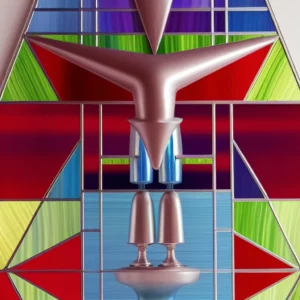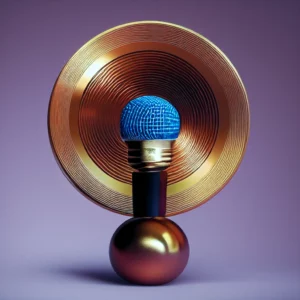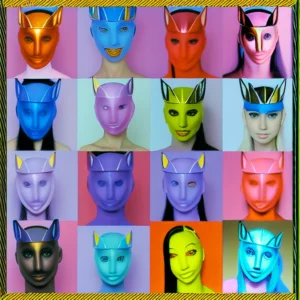Your Least Favorite Screwdriver
One thing that people have observed that’s a bit unusual about me is that I use such a wide variety of models and tools in my work, and I don’t seem to have a problem when the rules of reality that those models are based upon seem to be in conflict.
For instance, I can write from a neuroscience perspective in one article, and in another piece I might be talking about spiritual energy. This gives me a lot of flexibility. I might use one set of models when talking to an engineer and a different set when talking to a yoga instructor.
There are several reasons I like to leverage a wide variety of models.
One is that I like results. Some ways of modeling reality produce better results than others. And so given a choice between worse results and better results, I try to favor models that produce better results.
I also grew up with conflicting models as they were taught in school. My religious upbringing was full of holes, so I was used to dealing with models that didn’t add up logically, yet I was expected to apply them anyway. So I had plenty of years to practice dealing with disagreeing models, like reading the Bible one hour and then reading a biology textbook the next. I could still get As in both classes, as long as I used the appropriate models for each.
I’ve also studied history, including the history of science, so I learned that human models evolve over time. We are often wrong about reality, especially when we’re certain we’re right. So it doesn’t take much figuring to realize that our popular models today will eventually be replaced by something better. This helps me get past the arrogance of thinking that any model I use today won’t be considered primitive, foolish, or stupid eventually – even as it may still be recognized as elegant or brilliant for its day.
And from the other side, I’ve read and watched plenty of sci-fi such as Star Trek. And so I got the sense that the future is always going to be looking back on us and poking fun at our limited and inaccurate models of reality. The future is surely home to many superior models, which means we’re still using inferior models today. This viewpoint reminds me of the temporary nature of our models. They’re just tools to be used for a time, and they’ll eventually be replaced by something better.
Additionally, as I’ve delved into the nature of reality, considering what the best base model could be, I came to see that the true nature of reality is unknowable. It could be objective or subjective or some combo of the two. An objective reality can simulate a subjective one and vice versa. It was a big breakthrough in my thinking to realize that no matter what kind of being I become, physical or spiritual, alive or dead, I’ll never be able to discern the true nature of reality. Not even a god could tell. And that’s kind of exciting because it means this aspect of existence will be a perpetual mystery, regardless of the length of one’s lifespan or the form of one’s consciousness.
I found it freeing to accept this because it means that I’ll never be able to determine the one, true base model of reality. So I can’t evaluate models based on truth alone. If I want to compare models, it makes no sense to argue which is more true than the other. So I have to use a different comparison function, such as which models get the best results, which models make the most accurate predictions, or which models synergize the best with other models.
I regard models as tools in a toolbox. A screwdriver doesn’t have to agree with a hammer for both to be useful. You could argue about whether it’s better to screw something into a wall or nail it into a wall, or you could test both and see which works better. And you’ll likely find that sometimes a screw is best, and sometimes a nail is best. By practicing with both tools, you gradually discover the strengths and weaknesses of each.
Just as we develop favorite tools over time, we lean towards favorite models too. I love to test and explore different models to learn their strengths and weaknesses. This gives me lots of different options for solving problems.
Suppose I wake up one day feeling stressed, and I want to feel relaxed and peaceful instead. I know how to solve that problem using a variety of approaches:
- I could drink a green smoothie, which will be easy to digest, thereby making it easier for my body to process the emotional energy and let it pass through.
- I could do a cardio workout, which will rebalance my hormones and neurotransmitters and boost my mood.
- I could do a meditative visualization to send the negative energy out of my body and shield myself from negative energy transmissions.
- I could listen to and sing one of my favorite songs, which will help move the stuck energy through my body.
- I could read something uplifting or write an article, which will shift my mental focus.
- I could talk it out or cuddle with someone, which will invite some empathy and social support.
- I could handwrite three pages about the feelings and then shred them afterwards, which will move the emotional feelings into the logical part of my brain, thereby dissipating the feelings.
- I could dialog with the stress aloud, asking what it wants me to know.
- I could identify the problem or challenge that I’m framing as stressful, and I could dive right into action to resolve it.
- I could reframe the problem to consider, accept, and surrender to the consequences it might generate, reminding myself that I could handle those if necessary.
- I could take the day off to rest, relax, and rejuvenate.
- I could get a massage.
- I could go for a long walk.
- I could rebalance my chakras via a simple meditation.
Any of these could be effective. But some approaches will treat me as a physical being, others as a mental or emotional being, and some as a spiritual being.
What’s the most reliable and consistent solution? It depends on what kind of stress I may be feeling, where I think it’s coming from, and how strong it is. Any of the solutions above could be the best in certain situations.
While diversity of tools can be nice, you’re likely to develop some favorites. You may find that some tools work really well in a variety of situations, so you’ll end up using them a lot. And if you use them a lot, you’ll get good at using them and will probably find it advantageous to use them even more.
Note that no belief is required to use a model or a tool. A model is a mental tool that you can pick up and put down whenever you want. So if you dislike a particular model, that’s fine, but you can still use it just as you can still use your least favorite screwdriver. A screwdriver doesn’t care if you believe in it or not.
When people say things like, “I’m not into woo woo stuff,” or “I’m just not a techie person,” or “I don’t like vegetables,” they’re limiting the tools they’ll allow into their toolbox. What if the best solution is carrot juice?
It doesn’t matter if you dislike woo woo. You can still use woo woo tools and models. It doesn’t matter if you’re not a techie person. You can still use technology. It doesn’t matter if you dislike vegetables because you can still digest them. Those complaints are all nonstarters. You needn’t believe in a tool or like a tool to use it.
The models that you’ve rejected because you dislike them could still be effective in some situations, especially when all your other tools are falling short. Sometimes I’ve used woo woo solutions when other approaches didn’t work, even to solve a technical issue where you’d think a technical approach would make more sense. Many people have resolved major health problems using non-medical approaches, perhaps because they know that today’s best medical models will eventually be regarded by historians as yet another form of ignorant butchering.
If you ever find yourself getting stuck and not progressing towards the results you want, try mixing up the models and tools you’re using. Set your favorite tools aside momentarily, and try using one of your least favorites to see if it helps you break through the impasse.
Your least favorite screwdriver can still be useful now and then. It doesn’t care if you believe in it, and it doesn’t care if you like it.




